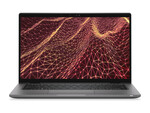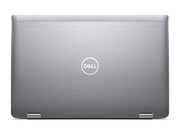Dell Latitude 7430, i5-1265U
Especificaciones de Portátil(es)

Cámara principal: 2 MPix
Price comparison
Análisis para el Dell Latitude 7430, i5-1265U
Origen: Laptop Media

Único Análisis, disponible online, Mediano, Fecha: 07/08/2023
Origen: Laptop Media
 EN→ES
EN→ESWeirdly, it feels like Dell has made a step down from last year. Not in terms of performance, because naturally, the 12th Gen Intel CPUs mop the floor with their 11th Gen counterparts. However, there is just simply too little going on in terms of change. The memory is still soldered to the motherboard, with the difference that 28W CPUs get LPDDR5 RAM, instead of DDR4. Some things remain the same for the better, though. The port selection with the two Thunderbolt 4 connectors rocks! Also, you get the proximity sensor, IR face recognition scanner, Full HD camera, and fingerprint reader. Plus, the keyboard is pretty comfortable for typing, thanks to its decent key travel and clicky feedback. But what we found shocking, is the decrease in battery life. The larger 58Wh package is not only smaller than its predecessor but also runs for almost half the time on a single charge. Dell Latitude 14 7430’s IPS panel has a Full HD resolution, comfortable viewing angles, and a good contrast ratio. Furthermore, the backlight doesn’t use PWM for brightness adjustment. As a disadvantage, the color coverage is only 50% of the sRGB color gamut. On the bright side, you still get two options regarding the body panels. You can do like us, and pick the Carbon fiber device with its soft-to-the-touch finish, or you can go the other direction – cold feel and aluminum. Regardless of what you choose, the build quality will be on point, and we have to respect that. In our opinion, going for the Fujitsu LifeBook U7512 is a far better choice, although it is larger in size. Or, if you happen to have the older Latitude 14 7420, stick to your guns, and don’t change it.
Único Análisis, disponible online, Muy largo, Fecha: 02/22/2023
Origen: Laptop Media

Support, disponible online, Muy corto, Fecha: 02/22/2023
Comentario
Intel Iris Xe G7 96EUs:
Tarjeta gráfica integrada en los SoCs Intel Tiger Lake G4 basados en la nueva arquitectura Gen. 12 con 96 EUs (Execution Units / Shader Cluster). La velocidad de reloj depende del modelo de procesador. Los chips Tiger Lake se fabrican en el moderno proceso de 10nm+ de Intel.
Estas tarjetas también deben ser capaces de aguantar todos los juegos actuales, pero la mayoría de ellos en configuraciones de detalles medios y bajos y con bajas resoluciones. Juegos más antiguos, o menos exigentes todavía pueden ser jugados con buena calidad de gráficos.
>> Más información puede ser encontrada en nuestra comparación de tarjetas gráficas moviles y la lista de benchmarks.
i7-1265U:
>> Más información puede ser encontrada en nuestra comparación de procesadores móviles.




